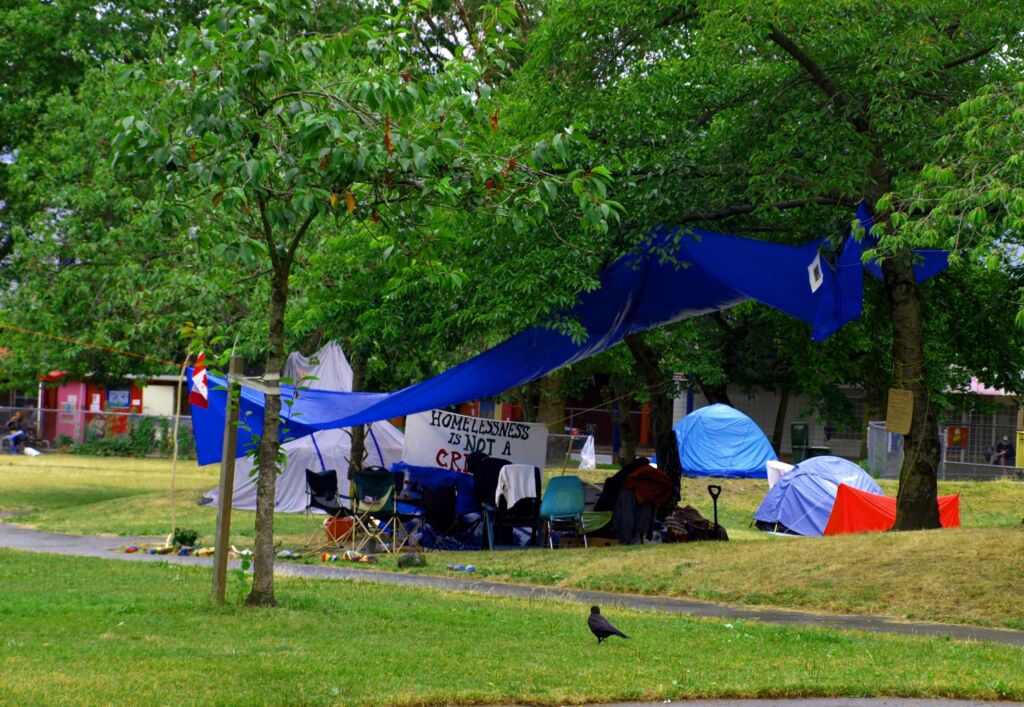I was recently invited to give a presentation at a two-day event discussing the overdose crisis and First Nations, with a focus on southern Alberta. My presentation (slide deck available here) focused on homelessness, substance use, harm reduction and Housing First.
With this in mind, here are 10 things to know:
- Indigenous peoples are overrepresented among persons experiencing absolute homelessness in Alberta. According to results of the last province-wide Point-in-Time homelessness count, Indigenous peoples represent 7% of Alberta’s total population, but 26% of persons experiencing absolute homelessness in the province’s seven largest cities. A similar phenomenon exists right across Canada, Australia and New Zealand.
- To truly understand homelessness among Indigenous peoples, it is important to understand flow between communities. Most Indigenous peoples experiencing absolute homelessness in Alberta’s major cities report not being from the community in question. In Calgary, for example, just 11% of Indigenous peoples experiencing absolute homelessness report always having lived in Calgary.
- A major study is about to explore factors behind the flow of First Nations people between southern Alberta communities. Specifically, it will look at those who end up experiencing absolute homelessness in Calgary. Its research team consists of Jodi Bruhn, Gabrielle Linsdstrom, Allan Moscovitch and Steve Pomeroy. More information on this project can be found in last fall’s Request for Proposals. The research is being funded by the Calgary Homeless Foundation.
- Traumatic events are an important factor leading a homeless person to use drugs. A 2015 Winnipeg study asked what factors made a homeless person more likely to be a person who uses drugs (PWUD). Traumatic events, especially residential school history, were found to be one of the most important factors. Other factors identified in the study as leading a person to use drugs included mental and physical health problems (i.e., people self-medicate). What’s more, a recent First Nations Health Authority report from British Columbia identifies factors that lead to substance use. They include: racism; intergenerational trauma (e.g., residential schools); and limited access to mental health and addiction treatment (which is often reported by members of First Nations).
- Homeless shelters do not and cannot adequately respond to the overdose crisis. A 2014 study looked at the use of homeless shelters in Atlantic Canada (it looked at all four Atlantic provinces). It found that shelters focus on providing shelter and do not have a strong mandate to fully support PWUDs. A 2018 report went further, identifying the following barriers in some homeless shelters in Canada: clients having to ask staff to access harm reduction supplies (to be discussed below); shelters refusing services to people under the influence; and rigid entry process (e.g., extensive paperwork, the need for multiple pieces of documentation).
- It is very challenging for staff in homeless shelters to properly engage with people who use drugs, largely because on-site use of illicit substances is prohibited. To put it bluntly, staff give out supplies but forbid the on-site use of drugs. Shelter washrooms can therefore become “de facto unsupervised consumption sites” (p. 87).
- Harm reduction focuses on reducing harm caused by drug use without requiring total abstinence. Harm reduction approaches include the distribution of condoms, clean syringes and safe inhalation kits. There is solid evidence supporting the view that harm reduction approaches: reduce risk-taking behaviour; reduce the risk of transmission of blood-borne diseases; prevent overdoses; reduce crime; and increase contact with other supports (including healthcare supports).
- Supervised consumption services are one form of harm reduction. According to this report, they “consist of providing a safe, hygienic environment in which people can use drugs with sterile equipment under the supervision of trained staff or volunteers” (p. 2). As of February 2019, 28 supervised consumption services sites were operating under an exemption from Canada’s federal government.
- Supervised consumption services have proven to be very effective in southern Alberta.During 2018 alone, Calgary’s supervised consumption site saw nearly 52,000 visits, resulting in more than 700 overdose reversals. Also during 2018 alone, Lethbridge’s site saw nearly 128,000 site visits, resulting in more than 1,300 overdose reversals.
- Housing First is an approach whereby people in need of affordable housing receive housing without having to first prove their ‘housing readiness.’ According to this study: “Harm reduction is a key principle of Housing First, where individuals are not required or expected to undergo treatment for substance use or to abstain in order to access and keep permanent housing” (p. 1). However, Housing First does not mean housing only. That is, other social supports—including drug and alcohol treatment, which may lead to reduced substance use—are crucial to the success of Housing First.
I wish to thank the following individuals for invaluable assistance with this blog post: Lorraine Barnaby, Shannon Beavis, Jodi Bruhn, Julia Christensen, Arlene Haché, Leslie Hill, Diana Krecsy, Bren Little Light, Katelyn Lucas, Adam Melnyk, Susan McGee, Katrina Milaney, Gautam Mukherjee, Bernie Pauly, Steven Richardson, Chris Sarin, Quentin Sinclair, Lorie Steer, Vincent St-Martin and Alina Turner. Any errors are mine.
Nick Falvo is a Calgary-based research consultant, a research associate at the Carleton University Centre for Community Innovation, and a CCPA research associate. Follow him on twitter at @nicholas_falvo This blog post originally appeared on the website of Nick Falvo Consulting.







